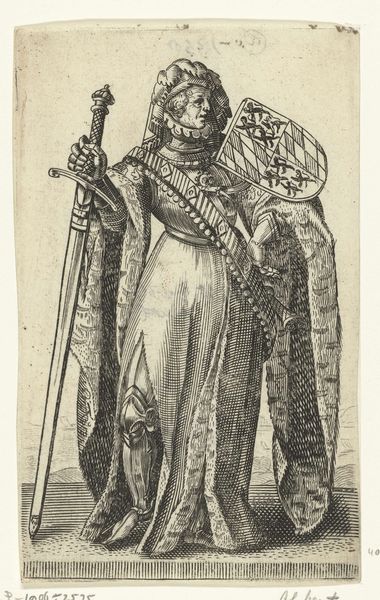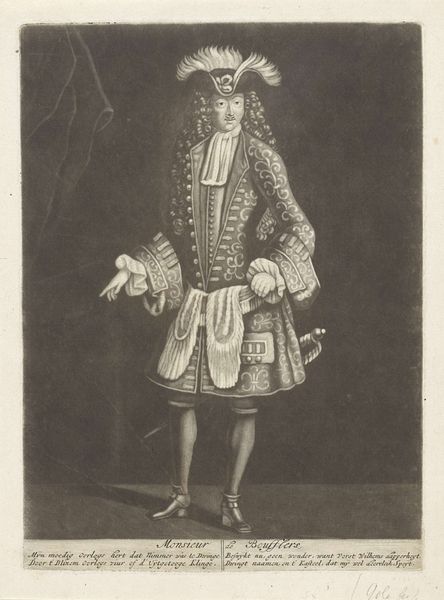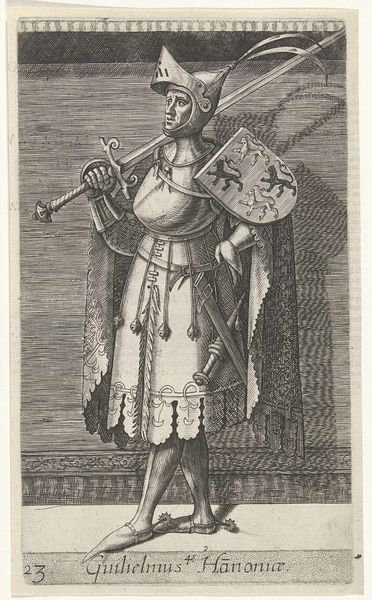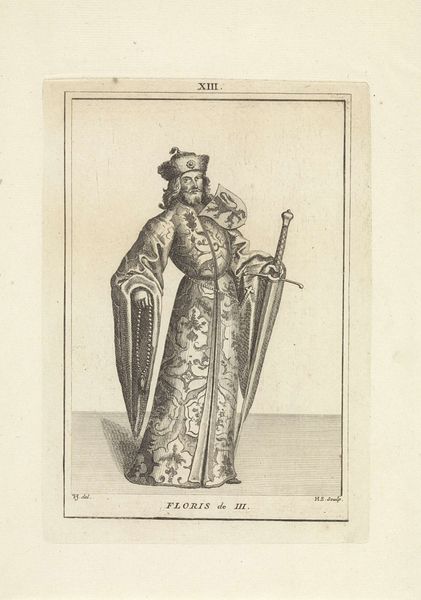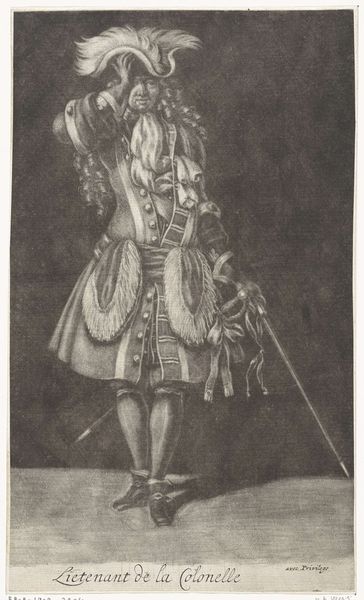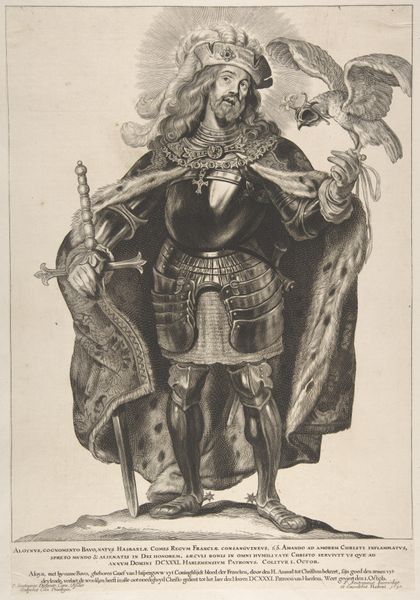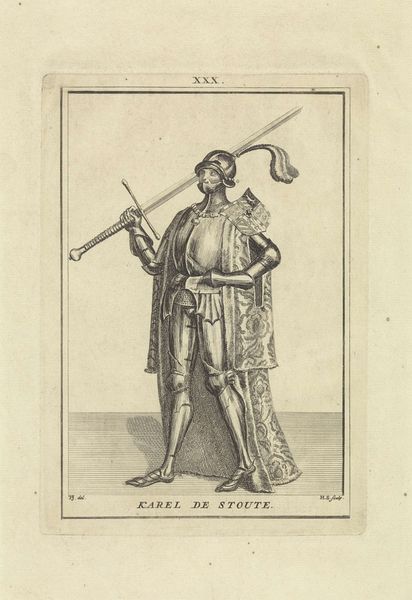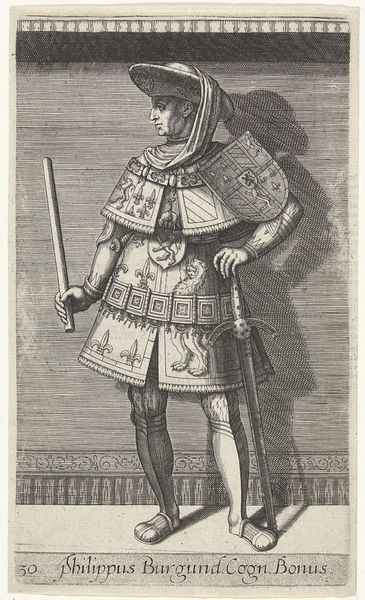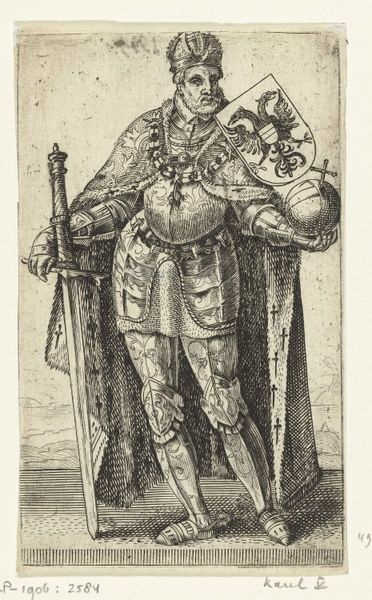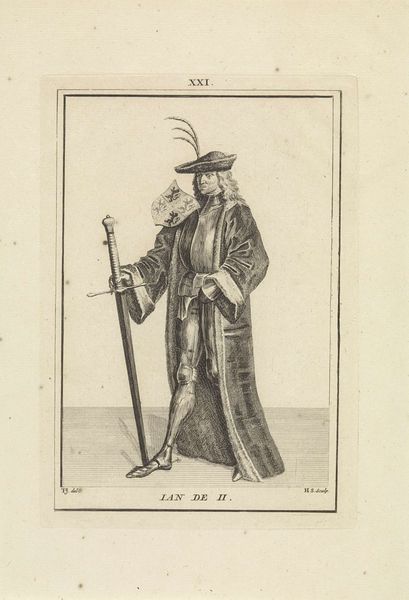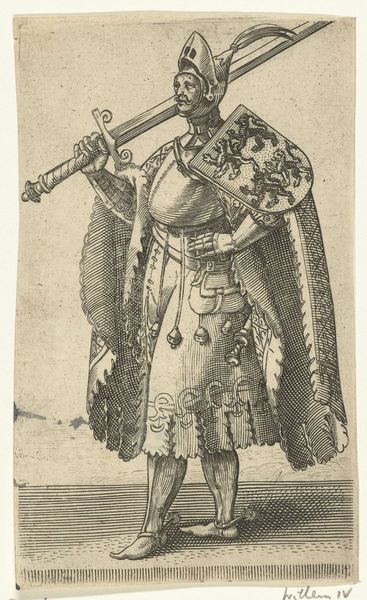
print, engraving
#
portrait
#
baroque
# print
#
old engraving style
#
genre-painting
#
engraving
Dimensions: height 254 mm, width 179 mm
Copyright: Rijks Museum: Open Domain
Editor: This is "Vrouw in jachtkostuum," or "Woman in hunting dress," an engraving by Jacob Gole, made sometime between 1692 and 1700. It feels like a scene from a play, with the elaborate costume and poised stance. What stories do you think this image is trying to tell? Curator: I see a fascinating commentary on societal roles. The image presents a woman adorned in traditionally masculine attire, a hunting costume, complete with a firearm. What do such symbols evoke for you? Editor: Freedom, maybe? Breaking away from typical expectations. But it still feels performative. Curator: Exactly! Hunting was a popular aristocratic activity, wasn't it? The inclusion of such overt attire carries connotations of class and privilege, alluding to this woman's access to spaces and activities generally denied. The weapon itself is phallic symbolism – what do you think it represents in this context? Editor: Power? Perhaps even challenging male authority? Curator: It is loaded with those meanings. Consider that in visual language, dress performs meaning. Look at the towering feathers and stiff posture - can you see echoes of the earlier symbolic association of those accessories of royal power? How might audiences of the time interpret such mixing and matching of signs? Editor: So, it’s less about literal hunting, and more about making a statement about status and perhaps subverting gender norms. I’m learning so much about how images operate! Curator: Visual symbols have echoes and resonances – each new presentation layers the earlier symbolic load. Remembering this layering, you will unlock so much more when viewing art!
Comments
No comments
Be the first to comment and join the conversation on the ultimate creative platform.
